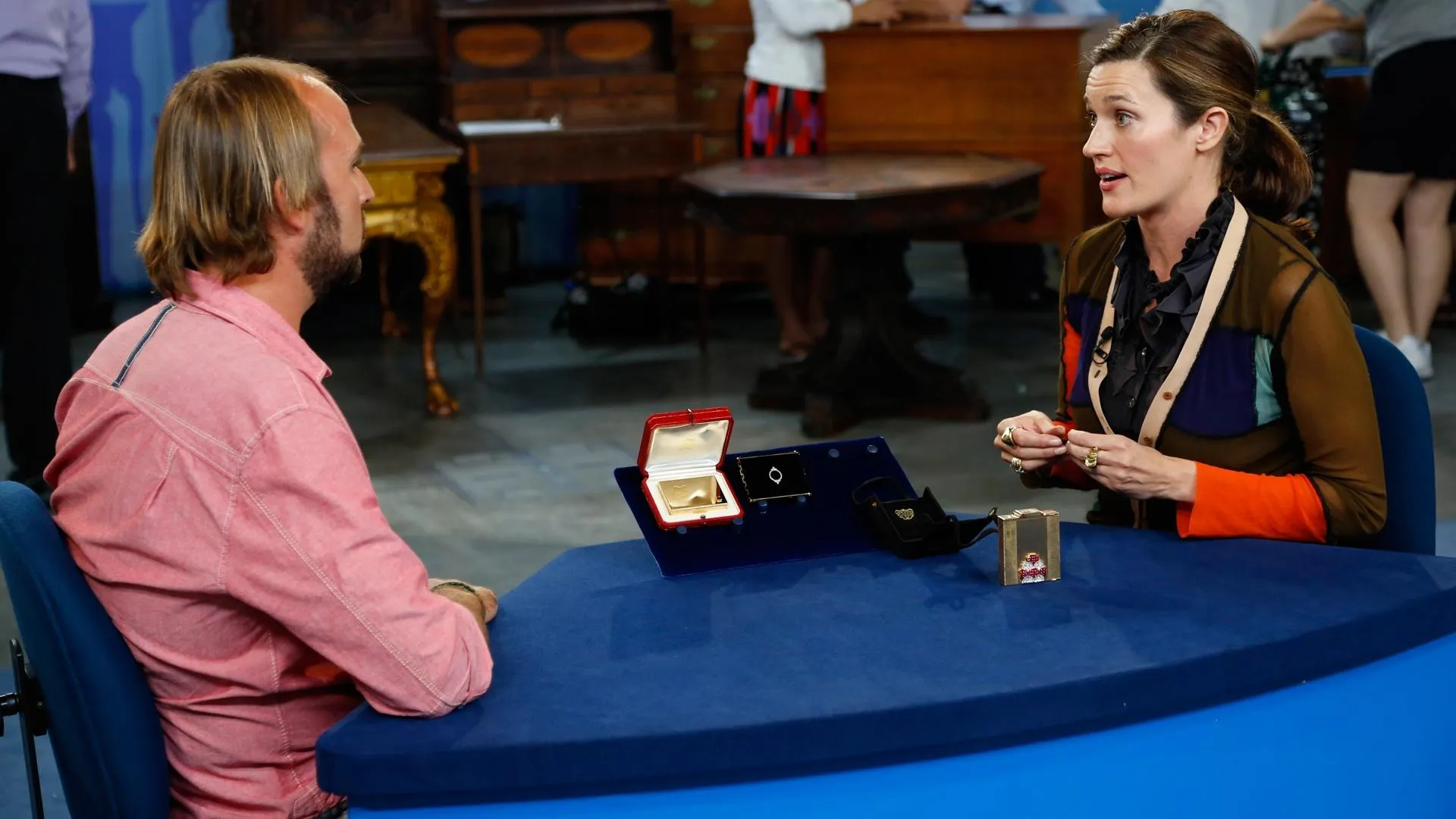GUEST: My grandmother bought it at an estate sale in 1955, and it's been sitting in the living room of her last house and this house. And that's all I know about it.
APPRAISER: Okay, well, we were actually hoping that you could help us a little bit out today. Because we've been having difficulty trying to figure out the origin of this table. And I want to drop it down. One of the primary things that we do to find out where a table was made is we look for secondary woods. And in this case, we can find white pine, and oak and a rosewood bottom. Again, which is just like the top. The problem with that is that that could have been used in England, could have been used in the United States, could have been used in Scotland, or anywhere. So trying to nail down its exact origin is difficult.
GUEST: Wow.
APPRAISER: But what it is we do know. It's a gothic revival parlor table. Octagonal in shape. And the gothic revival gets its roots back from the 12th century from architecture, but experiences a revival in the 19th century.
GUEST: Oh.
APPRAISER: People that would use it in the interior were generally sophisticated or clergy, but it was to represent your ideals as a citizen. Very scarce to find. Basically it's Christian-inspired. It emphasizes the vertical, always looking up. And when we start out here we can see this wide base with these gothic elements on this beautiful leg. With burl insets. Rosewood. And then we move up into this fine skirt and this magnificent top.
GUEST: Wow.
APPRAISER: Of marquetry. And this is what tells us a lot. This thistle that's exploding, the stalk of that thistle dancing in and out of these circular arches. It's spectacular. It's this element here that leads us to believe that it's Scottish. If not Scottish, English for the Scottish market because the Scottish thistle is so important to Scotland.
GUEST: Could you tell me how they did the color?
APPRAISER: It's mostly dyed woods.
GUEST: Oh, really?
APPRAISER: So it's a marquetry, which means they cut it out, inset it. But this is dyed. When we look at this green leaf, this is a dye into the wood and this is penned in. So what looks like a partitioned piece of marquetry is really one larger piece of marquetry that is dyed. It dates from the first half of the 19th century.
GUEST: Really?
APPRAISER: Yeah, 1825 to probably 1865.
GUEST: Oh, my grandmother would have loved to have known that.
APPRAISER: An outstanding example of what it is. If we were going to put it in auction we'd estimate it at $15,000 to $25,000.
GUEST: Oh, you're kidding. My mother's going to die.
APPRAISER: Okay.
GUEST: I'm not kidding. Wow, that's wonderful.









